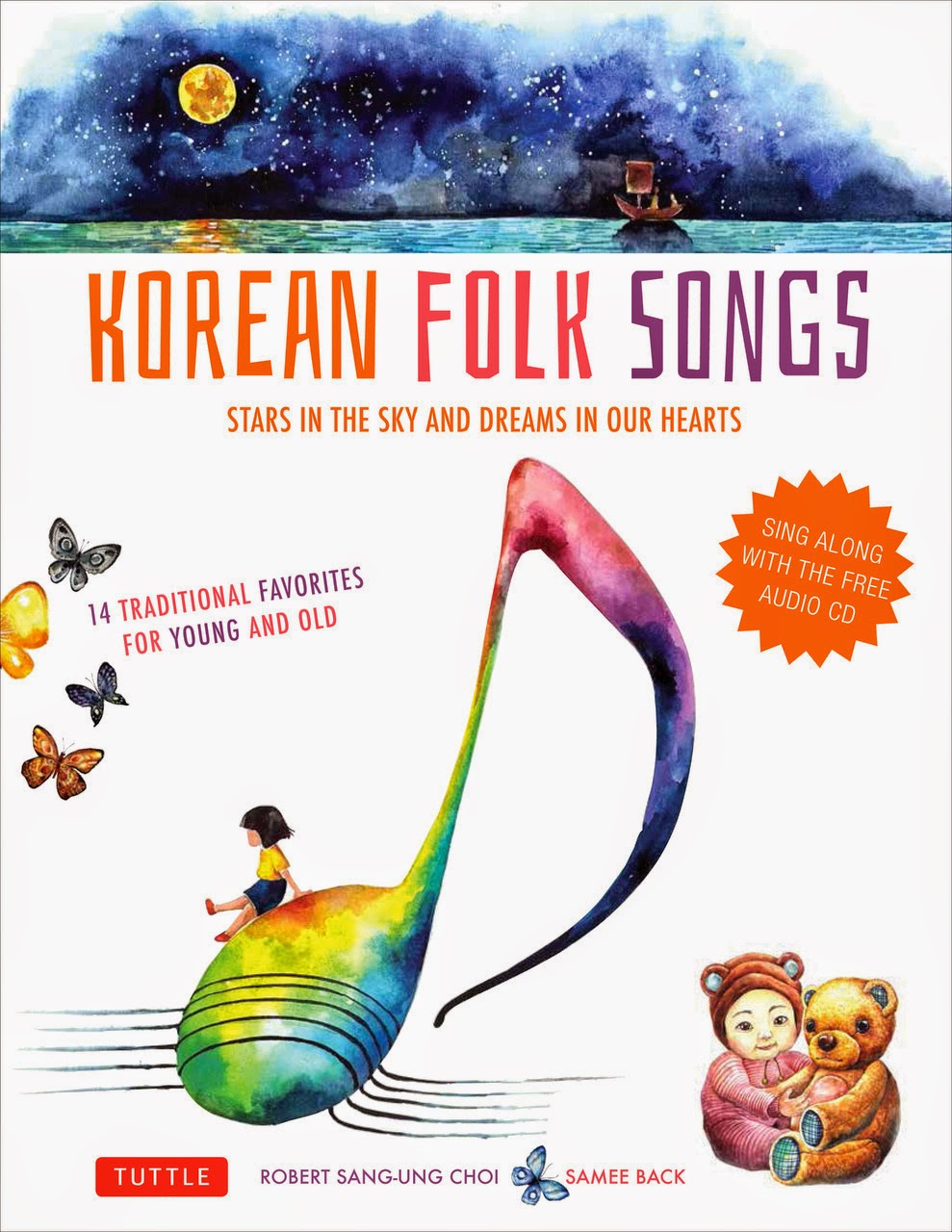17 Nov / Korean Folk Songs: Stars in the Sky and Dreams in Our Hearts by Robert Sang-Ung Choi, illustrated by SamEe Back

 Western children’s songs and nursery rhymes with their upbeat tempo and easy rhythms often mask unpleasant, even frightening, scenarios: “Ring Around the Rosie” is widely considered to be a reference to England’s 17th-century Great Plague, “Rock-a-bye, Baby” ends with a warning about the possibility of violent danger, even “Humpty Dumpty” signifies irreparable damage. Korean Folk Songs, which features “14 traditional favorites for young and old” as the cover promises, is clearly targeted at children with its picture book format, simple language, and bright illustrations on every page. Like their western counterparts, these Korean tunes also mix and match carefree fun with heartfelt longing, whimsy with tragedy.
Western children’s songs and nursery rhymes with their upbeat tempo and easy rhythms often mask unpleasant, even frightening, scenarios: “Ring Around the Rosie” is widely considered to be a reference to England’s 17th-century Great Plague, “Rock-a-bye, Baby” ends with a warning about the possibility of violent danger, even “Humpty Dumpty” signifies irreparable damage. Korean Folk Songs, which features “14 traditional favorites for young and old” as the cover promises, is clearly targeted at children with its picture book format, simple language, and bright illustrations on every page. Like their western counterparts, these Korean tunes also mix and match carefree fun with heartfelt longing, whimsy with tragedy.
Robert Sang-Ung Choi, a Chicago-born musician and music educator, prefaces each selection with a tidbit of cultural and historical background; corresponding sheet music with the Korean lyrics in hangul, romanized phonetic lyrics, and the English translation, follow. Turn on the included CD for the full effect, which features a young sweet voice (credited as just “Yebin” in the opening “Acknowledgements”) singing over crisp piano accompaniment; each selection is also paired with an instrumental version – an ideal karaoke opportunity for kiddies.
Melded together, the 14 offer an overview of a century-and-half of Korean history and culture. Mingling with mountain rabbits, butterflies, a baby calf, are difficult memories of the injustice of cruel landlords and of mourning a sibling lost to the devastation of the Japanese occupation – the latter was disguised with “cheerful music … a strange contrast to the sad words” in order to bypass the ruling Japanese who prohibited “negative or depressing” songs.
Korea’s “fishing culture” is celebrated in two selections, and the Korean landscape remembered in “Arirang,” the country’s best-known folk song which has been “inscribed” by UNESCO in the “Representative List of the Intangible Cultural Heritage of Humanity.” Composer Jung Soon Cheol, nicknamed “Korea’s Beethoven,” whose rhythmic “Clap, Clap, Clap” is often one of the first nursery rhymes in a Korean child’s repertoire, is a happy little tune, and yet his life story is a poignant reminder of a nation still divided: Jung, who helped found Korea’s Children’s Rights Movement in 1923, was abducted and disappeared during the Korean War.
For Korean American parents who grew up with these songs, discovering this title surely comes with a giggle of nostalgic delight. Our almost-adult daughter can still hop to san tokki (mountain rabbit) as soon as she hears the first phrase. Given the additional lessons of ‘oh, I didn’t know that,’ is both sobering and enlightening. For those without immigrant Korean grandparents to teach the first tunes, this provides just the right start, especially with the accompanying music and CD: read, hear, play, and soon enough you’ll be singing (and hopping, clapping, wriggling) along.
Readers: Children, Middle Grade
Published: 2014
